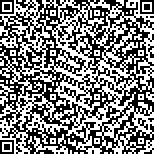本文已被:浏览 3884次 下载 3532次
投稿时间:2015-10-20
投稿时间:2015-10-20
中文摘要: 我国载人航天工程已经进入空间站阶段。文章介绍了近期将发射的"天宫"2号空间实验室和"天舟"1号货运飞船上的空间科学与应用项目,以及我国空间站空间科学与应用领域及主要方向,概述了这些研究方向的重要性及重点,介绍了空间站开展空间科学与应用的研究设施、科学实验平台和天地支持系统。文章强调,空间站工程是我国推动空间科学及应用发展、实现突破的历史机遇,需要精心组织,集中力量做好实施工作,并大力开展国际合作。
Abstract:China's human space project has gone to the stage of space station. This stage involves a space laboratory which will be launched in 2016, and space station construction which will be completed around 2022 then operated on the orbit for more than 10 years. The research items on board of Tian Gong-2 space laboratory and Tian Zhou-1 cargo ship related with physical and life science in microgravity. These experiments focus on forefront fundamental questions in science nowadays. There are 3 experiments on field of fundamental physics. Cold atom clock experiment adopts laser cooling of Rubidium atoms to below μK class in microgravity and take it interrogate with microwave in ultra-slow speed to get very high frequency stability say 10-16 order. In quantum key distribution experiment, the photons will be send from space to ground by using so called Decoy State Method in which the photons are modulated in polarization angular. The final purpose of static electricity accelerator experiment is to explore potential "non-Newtonian force in micro-meter action scope" in microgravity. The accelerator resolution is 10-11g/Hz1/2 order. For microgravity science experiment, a thermo capillary convection experiment in liquid bridge with large Prandtl number has been prepared. The aspect ratio and volume ratio could be adjusted on a liquid bridge with 20 mm in diameter for instability mechanism research. A double zone resistance heating furnace provides opportunity for varied material processing and formation mechanism study such as semiconductor, optoelectronics materials, metal alloys and metastable materials, functional single-crystal, nano and composite materials. A two phase flow experiment will investigate the liquid phase change of evaporation and condensate dynamics in microgravity, and demonstrate key technology related two-phase system rack on space station. In life science field, the high plant culture experiment will realize plant flowering and seed-setting in space by using short-day and long-day plant in different photoperiod conditions. The animal cell culture experiment in space will investigate the cell multiply and differentiation of mammal stems cells, embryonic stem cell development, and metabolizes un-balance of osteoblast and osteoclast cells. The research fields on Tian Gong-2 are extended to astrophysics and earth observation. A new concept gamma ray burst polarimeter based on Compton scattering principle have been developed to understand GRB radiation region geometry and emission mechanisms. It might be open an unused window for high energy astronomy. The new generation remote sensors involving a multi-angle polarization & wide band spectral Imager, an Interferometry Imaging radar altimeter, and a multi-band ultraviolet limb imager will be send to orbit with Tian Gong 2. It could acquire detailed spectrum image of ocean, land and atmosphere, sea surface height and wind speed, and 3D distribution of atmosphere density, ozone, aerosol, etc. The data expected to be used in wide application aria and also used for global environment research.Based on "science and requirement driven" and "bottom-up" approach, and procedure of AO, proposal and peer evaluation, the approved science and application plan of China's space station defined 8 research fields, and several research directions in each field respectively. These fields and directions are listed infollowing. Space life sciences and biotechnology, main directions are gravitational biology, radiation biology, biotechnology, basic research of CELLS,and forefront & intersec-tion research. Microgravity fluid physics and combustion, directions are fluid dynamics, two-phase flow, complex fluids, combustion science and prevention. Material science in space, directions are basic materials science research, advanced materials processing, service behaviour of materials in the space. Fundamental physics in microgravity, directions are cold atom physics, high-precision time-frequency, relativity and equivalence principle demonstration. Astronomy in space, directions are multi band photometry and all sky spectrum survey, dark matter and cosmic rays, changing sourse and burst phenomena. Earth science in space, the directions are next generation earth sensor, global change related earth science, environment and resources related application. Space physics, directions are space environment and solar active prediction, low latitude ionosphere and thermosphere phenomena. Space application technology, directions are the innovative information and communication technology in space, etc. For promoting research outputs for China's space station, important research facilities including an active optical facility with 2 m main mirror, a high energy cosmic radiation and dark matter facility, and the quantum key and optics transmission facility are arranged. Total 13 experimental racks inside pressurized capsule and 3 exposed devices on exposure platform are going to be developed. The ground based supporting segment for space science and application mission are also planted and designed. Space science and application mission in China's space station related with wide field, great scale and big challenge. It is expounded that space station provides historical opportunities to promote space science and application in China, and to take science breakthrough and application benefits. For this purpose we need do best in carful organization, implementation with great efforts, and promoting of international cooperation.
keywords: space station research field space science and application research facility platform for science experiment
文章编号: 中图分类号: 文献标志码:
基金项目:
引用文本:
高铭,赵光恒,顾逸东.我国空间站的空间科学与应用任务[J].中国科学院院刊,2015,30(6):721-732.
Gao Ming,Zhao Guangheng,Gu Yidong.Space Science and Application Mission in China's Space Station[J].Bulletin of Chinese Academy of Sciences,2015,30(6):721-732.
高铭,赵光恒,顾逸东.我国空间站的空间科学与应用任务[J].中国科学院院刊,2015,30(6):721-732.
Gao Ming,Zhao Guangheng,Gu Yidong.Space Science and Application Mission in China's Space Station[J].Bulletin of Chinese Academy of Sciences,2015,30(6):721-732.


